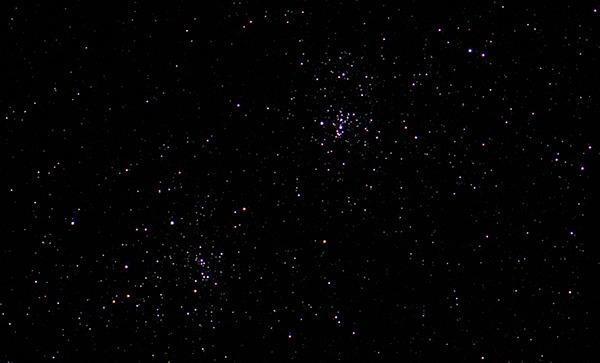
NGC 869/884 Double Cluster
NGC 869/884 Double Cluster
NGC 869 is the westernmost of the Double Cluster. NGC 884 is the easternmost of the Double Cluster. NGC 869 and 884 are often designated h and χ Persei, respectively. The cluster is about 14 million years old. Located in the Perseus OB1 association, both clusters are located physically close to one another, only a few hundred light years apart. The clusters were first recorded by Hipparchus, thus have been known since antiquity.
Thank you for reading this post, don't forget to subscribe!
Some confusion surrounds what Bayer intended by these designations. It is sometimes claimed that Bayer did not resolve the pair into two patches of nebulosity, and that χ refers to the Double Cluster and h to a nearby star. Bayer’s Uranometria chart for Perseus does not show them as nebulous objects, but his chart for Cassiopeia does, and they are described as Nebulosa Duplex in Schiller’s Coelum Stellatum Christianum, which was assembled with Bayer’s help. The clusters are both located in the Perseus OB1 association, a few hundred light years apart from each other. The clusters were first recorded by Hipparchus, thus have been known since antiquity.
The Double Cluster is often photographed and observed with small telescopes. The clusters are visible with the unaided eye between the constellations of Perseus and Cassiopeia as a brighter patch in the winter Milky Way. In small telescopes the cluster appears as an assemblage of bright stars located in a rich star field. Dominated by bright blue stars, the cluster also hosts a few orange stars.
Personal reflections
| Log Index: | 1514 |
| Session: | 487 |
| Date: | 2022-08-28 |
| Equipment: | 110mmDoublet EP APO – AG Canon 60D |
| Location: | BCMKSP |
Keywords: NGC 869,NGC 884,Double Cluster, Open Clusters, 110 Finest NGCs, Perseus